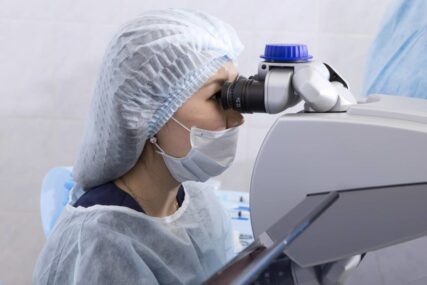Today More People Can Benefit from Laser Vision Correction

Early in the evolution of LASIK, many patients wanting laser vision correction were told their prescriptions were too high, corneas too thin or dry eye symptoms too severe to be eligible. To be clear, there are medical conditions and vision issues that, for some people, mean LASIK isn’t a good option. However, laser vision correction, like most fields in medicine, is dynamic. Surgeons, like myself, work constantly to push science and technology in our commitment to continuous improvement in both safety and visual outcomes from LASIK and other laser vision correction procedures. The result of this effort—particularly for you—is that, today, more people and more types of vision prescriptions can take advantage of the benefits of laser vision correction. So, if you were interested in having LASIK a few years ago, but were told that you weren’t a good candidate, come in to see us at to see if the latest laser vision correction technologies can help you and your vision.
Today’s LASIK procedure has been fully optimized with more precise lasers and advances techniques along with high-definition digital measurement capabilities, resulting in more patients achieving 20/20 or better vision. Here in Kansas City, I’ve invested in the latest technologies to ensure the best safety and outcomes. These include:
Femtosecond lasers: Introduced in 2003, this ultra-precise laser replaces the surgical blade used to create the corneal flap, allowing some patients with thinner corneas to take advantage of LASIK. The femtosecond laser creates microscopically thin flaps, which have also been shown to reduce the incidence of dry eye post-LASIK. The femtosecond laser is also used for today’s SMILE procedure, another laser vision correction procedure surgeons may choose to recommend for those nearsighted patients who are good candidates.
Wavefront mapping and corneal topography: Light waves are used to create a microscopically detailed digital blueprint of the surface of the eye as well as the shape of the cornea to create a complete analysis of the patient’s vision. The ability to precisely measure visual distortions is an essential benefit to surgeons to achieve both visual acuity (clear vision at all distances) and quality (reducing glare and halos).
Next generation excimer lasers: Advances in laser technology deliver vision correction capabilities to a wider range of vision prescriptions. Today’s lasers make it possible for those patients at the far ends of the vision spectrum to benefit from LASIK and other vision correction procedures.
LASIK was approved by the U.S. Food and Drug Administration nearly twenty years ago. Since then, more than 45 LASIK technologies have been evaluated and approved by the FDA. If you were among those wanting LASIK when it first became available, but were told at the time you weren’t qualified, it is worth it to come in for a new evaluation to see if you are among those who may be able to take advantage of the latest innovations in laser vision correction.




